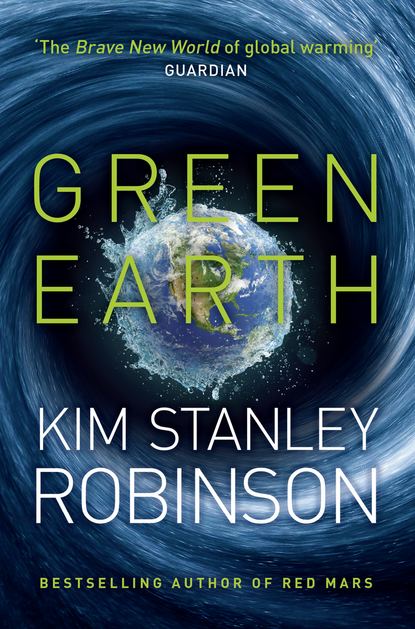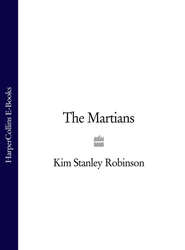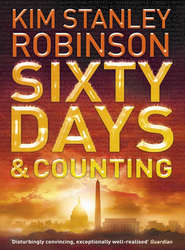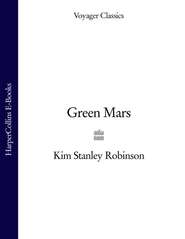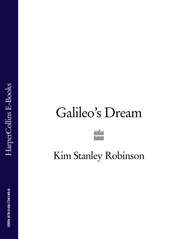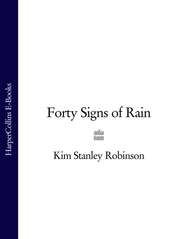По всем вопросам обращайтесь на: info@litportal.ru
(©) 2003-2024.
✖
Green Earth
Автор
Год написания книги
2018
Настройки чтения
Размер шрифта
Высота строк
Поля
He clicked to the jacket Anna had forwarded. Immediately he recognized one of the investigators’ names.
“Hey Anna?” he called out.
“Yes?”
“I know one of the guys on this jacket. The P.I. is a guy from Caltech, but the real work is by one of his students.”
“Yes?” This was a typical situation, a younger scientist using the prestige of his or her advisor to advance a project.
“Well, I know the student. I was the outside member on his dissertation committee, a few years ago.”
“That wouldn’t be enough to be a conflict.”
Frank nodded as he read on. “But he’s also been working on a temporary contract at Torrey Pines Generique, which is a company in San Diego that I helped start.”
“Ah. Do you still have any financial stake in it?”
“No. Well, my stocks are in a blind trust for the year I’m here, so I can’t be positive, but I don’t think so.”
“But you’re not on the board, or a consultant?”
“No. And it looks like his contract there is about over now.”
“That’s fine, then. Go for it.”
No part of the scientific community could afford to be too picky about conflicts of interest, or they’d never find anyone to peer-review anything. Hyperspecialization made every field so small that everyone knew everyone. So as long as there were no current financial or institutional ties with a person, it was considered okay to evaluate their work in the various peer reviews.
But Frank had wanted to make sure. Yann Pierzinski was a very sharp young biomathematician, one of those doctoral students whom one watched with the certainty one would hear from them again. Now here he was, and with something Frank was particularly interested in.
“Okay,” he said to Anna. “I’ll put it in the hopper.”
He began to read it. “Algorithmic Analysis of Palindromic Codons as Predictors of a Gene’s Protein Expression.” A proposal to fund continuing work on an algorithm for predicting which proteins any given gene would express.
Very interesting. This was an assault on one of the fundamental mysteries, a mystery that presented a considerable blockage to any robust biotechnology. The three billion base pairs of the human genome encoded some hundred thousand genes; most of the genes contained instructions for the assembly of one or more proteins, the basic building blocks of organic chemistry and life itself. But which genes expressed which proteins, and how exactly they did it, and why some genes created different proteins in different circumstances—all this was very poorly understood, or completely mysterious. This ignorance made most biotechnology an endless, very expensive matter of trial-and-error. A key to any part of the mystery could be very valuable. As in lucrative.
Frank scrolled down the pages of the proposal with practiced speed. Yann Pierzinski, Ph.D. biomath, Caltech. Still doing a postdoc with his advisor there, who was a real credit hog. Interesting to see that Pierzinski had gone down to Torrey Pines to work on a temporary contract, for a bioinformatics researcher whom Frank didn’t know. Perhaps that had been a bid to escape the advisor.
Frank dug into the substance of the proposal. The algorithm was one Pierzinski had been working on even back in his dissertation. The chemistry of protein creation was a sort of natural algorithm, Yann was suggesting. Frank considered the idea operation by operation; this was his real expertise, this was what had interested him from childhood, when the puzzles he solved had been simple ciphers. He had always loved this work, and now perhaps more than ever, offering as it did a complete escape from consciousness of himself. Why he might want to make that escape remained moot; howsoever it might be, when he came back he felt refreshed, as if finally he had been in a good place.
He also liked to see patterns emerge from the apparent randomness of the world. This was why he had recently taken such an interest in sociobiology; he had hoped there might be algorithms to be found there which would crack the code of human behavior. So far that quest had not succeeded, as so little in human behavior was susceptible to controlled experiments, which meant that theories could not be tested. That was a shame. He badly wanted clarification in that realm.
At the level of the four chemicals of the genome, however—in the long dance of cytosine, adenine, guanine, and thymine—much more seemed to be amenable to mathematical explanation, also experiment, with results that could be conveyed to other scientists, and put to use. One could test Pierzinski’s ideas, in other words, and find out if they worked.
He came out of this trance hungry. He felt quite sure there was some real potential in the work. And that was giving him ideas, strange ideas in some respects, and yet …
He got up stiffly. It was midafternoon already. If he left soon he would be able to hack through the traffic out to Great Falls. By then the day’s heat would have subsided, and the gorge walls would be nearly empty. He could climb till sunset, and do some more thinking about this algorithm, in the only place in the D.C. area left with a touch of nature to it.
CHAPTER 2 (#ulink_e9e1bade-0276-5373-b340-69593543e535)
IN THE HYPERPOWER (#ulink_e9e1bade-0276-5373-b340-69593543e535)
Mathematics sometimes seems like a universe of its own, but it comes to us as part of the brain’s engagement with the world, and appears to be an aspect of the world, its structure or recipe.
Over historical time humanity has explored farther and farther into the various realms of mathematics, in a cumulative and collective process, an ongoing conversation between the species and reality. The discovery of the calculus. The invention of formal arithmetic and symbolic logic, both mathematicizing the instinctive strategies of human reason, making them as distinct and solid as geometric proofs. The attempt to make the entire system contained and self-consistent. The invention of set theory, and the finessing of the various paradoxes engendered by considering sets as members of themselves. The discovery of the incompletability of all systems. The step-by-step mechanics of programming new calculating machines. All this resulted in an amalgam of math and logic, with symbols and methods drawn from both realms, combining in the often long and complicated operations that we call algorithms.
In the time of the development of the algorithm, we also made discoveries in the real world: the double helix within our cells. Within half a century the whole genome was read, base pair by base pair. Three billion base pairs, forming the genes that serve as instruction packets for protein creation.
But despite the fully explicated genome, the details of gene expression are still very mysterious. Spiraling pairs of cytosine, guanine, adenosine, and thymine: we know these are instructions for the development of life. We know the elements; we see the organisms. The code between them remains to be learned.
Mathematics continues to develop under the momentum of its own internal logic, seemingly independent of everything else. But several times in the past, purely mathematical developments have later proved to be powerfully descriptive of operations in nature that were either unknown or unexplainable at the time the math was being developed. This is a strange fact, calling into question all that we think we know about the relationship between math and reality, the mind and the cosmos.
Perhaps no explanation of this mysterious adherence of nature to mathematics of great subtlety will ever be forthcoming. Meanwhile, the operations called algorithms become ever more convoluted and interesting to those devising them. Are they making portraits, recipes, magic spells? Does reality use algorithms, do genes use algorithms? The mathematicians can’t say, and many of them don’t seem to care. They like the work.
Leo Mulhouse kissed his wife Roxanne and left their bedroom. The light was halfway between night and dawn. He went onto the balcony, heard the rumble of surf against the cliff. Out there lay the vast gray plate of the Pacific.
Leo had married into this clifftop house, so to speak; Roxanne had inherited it from her mother. Its view was something Leo loved, but the little grass yard below the second-story porch was only about fifteen feet wide, and beyond it was an open gulf of air and the gray foaming ocean, eighty feet below. And not that stable a cliff. He wished that the house had been placed a little farther back on its lot.
Back inside, down to the car. Down Europa, past the Pannikin in Leucadia, hang a right and head to work.
The Pacific Coast Highway in San Diego County was a beautiful drive at dawn. In any kind of weather it was handsome: in the sun with all the blues of the sea gleaming, in low clouds when shards and rays of horizontal sunlight broke through, or on rainy or foggy mornings when the narrow but rich palette of grays filled the eye. The gray dawns were the most frequent these days, as the region’s climate settled into what appeared to be a permanent El Niño—the Hyperniño, as people called it. The whole idea of a Mediterranean climate was leaving the world, even in the Mediterranean. Here coastal residents were getting sunlight deficiency disorders, and taking vitamin D and antidepressants to counteract the effects, even though ten miles inland it was a cloudless baking desert all the year round. The June Gloom had come to stay.
Leo took the coast highway to work every morning, enjoying the slight roller-coaster effect of dropping down to cross the lagoons, then rising back up to Cardiff, Solana Beach, and Del Mar. These towns looked best at this hour, deserted and as if washed for the day.
Then up the big hill onto Torrey Pines, past the golf course, quick right into Torrey Pines Generique. Down into its garage, into the biotech beast.
Complete security exam, metal detector, inspection by the bored security team, hardware and software check, sniff-over by Clyde the morning dog, trained to detect signature molecules: all standard in biotech now, after some notorious incidents of industrial espionage. The stakes were too high to trust anybody.
Then Leo was inside the compound, walking down long white hallways. He turned on his desktop screen, went out to check the experiments in progress. The most important current one was reaching an endpoint, and Leo was particularly interested in the result. It was a high-throughput screening of some of the proteins in the Protein Data Bank at UCSD, trying to identify ones that would make certain cells express much more high-density lipoprotein than they would normally. Ten times as much HDL, the “good cholesterol,” would be a lifesaver for people suffering from any number of ailments—atherosclerosis, obesity, diabetes, even Alzheimer’s. Any one of these ailments mitigated (or cured!) would be worth billions; a therapy that helped all of them would be—well. It explained the high-alert security enclosing the compound, that was for sure.
The experiment was proceeding but not yet done, so Leo went back to his office and read Bioworld Today on-screen. Robotics, artificial hormones, proteomic analyses—the whole industry was looking for therapeutic proteins, and ways to get those proteins into people. They were the recalcitrant problems, standing between “biotechnology” as an idea and medicine as it actually existed. If they didn’t solve these problems, the industry could go the way of nuclear power. If they did solve them, then it would be more like the computer industry in terms of financial returns—not to mention the impacts on health of course!
When Leo next checked the lab, two of his assistants, Marta and Brian, were standing at the bench, both wearing lab coats and rubber gloves, working the pipettes on a bank of flasks filling a countertop.
“Morning guys.”
“Hey Leo.” Marta aimed her pipette like a PowerPoint cursor at the small window on a long, low refrigerator. “Ready to check it out?”
“Sure am. Can you help?”
“In just a sec.” She moved down the bench.
Brian said, “This better work, because Derek just told the press that it was the most promising self-healing therapy of the decade.”
Leo was startled to hear this. “You’re kidding.”
“I’m not kidding.”
“No, please. Not really.”





